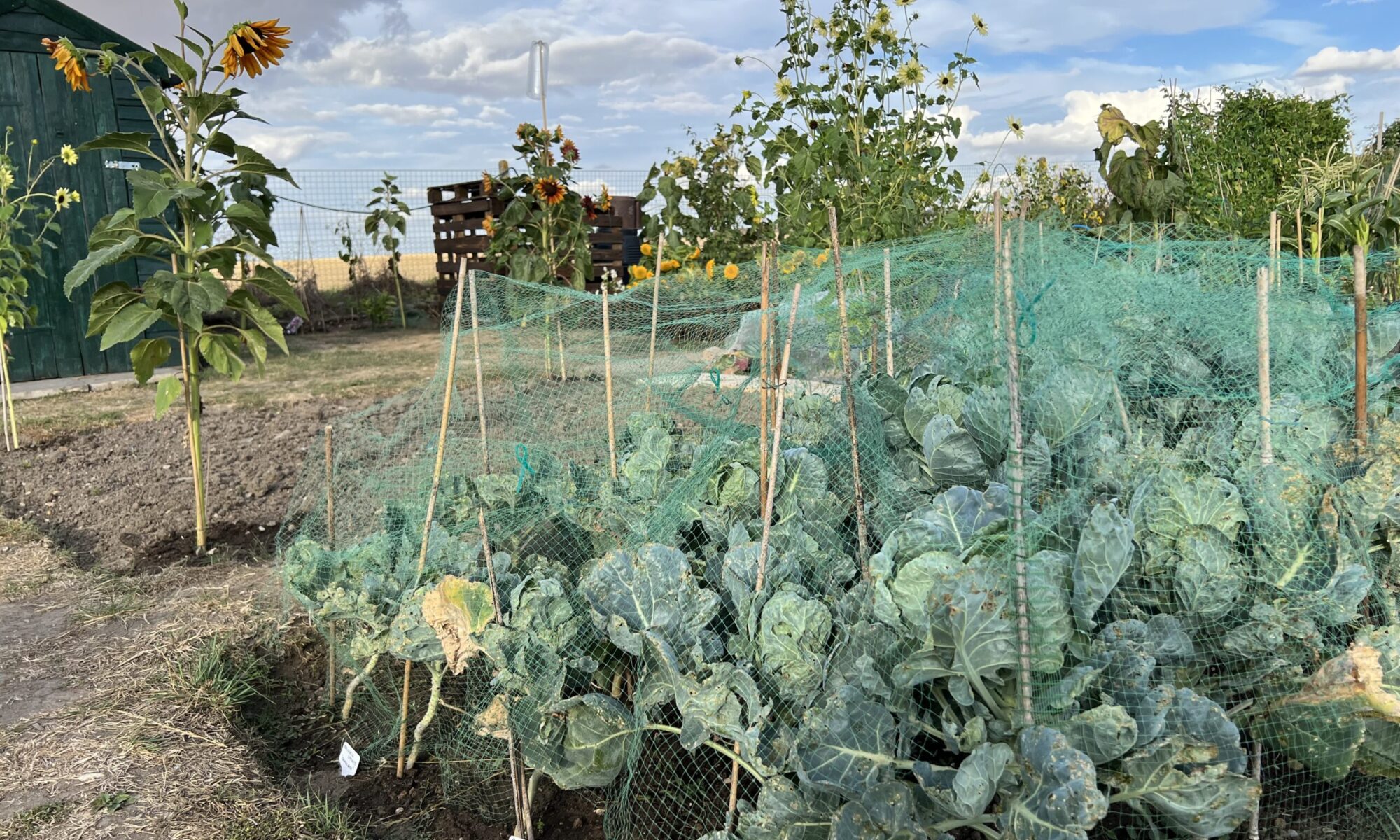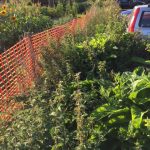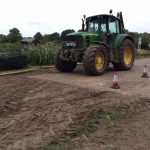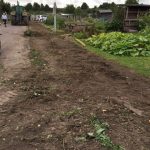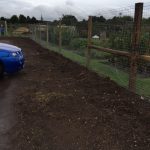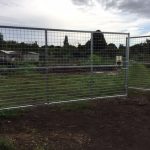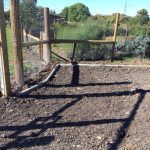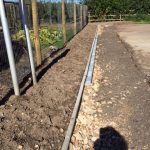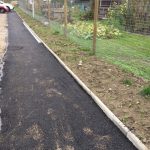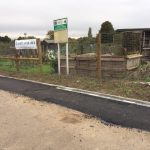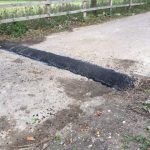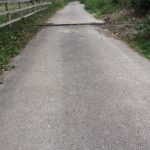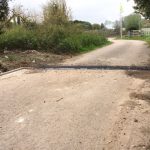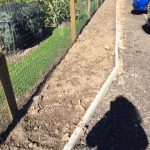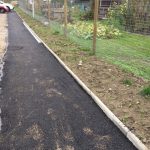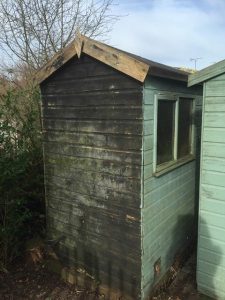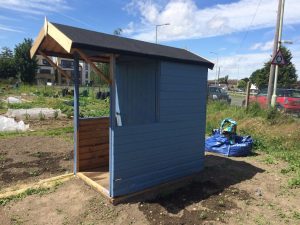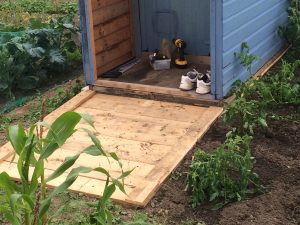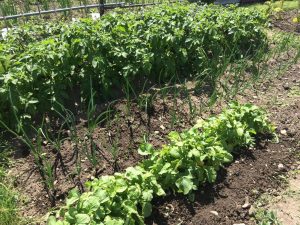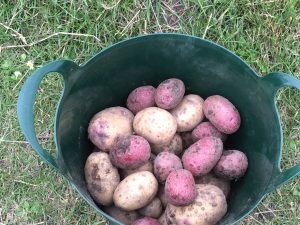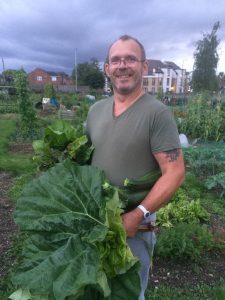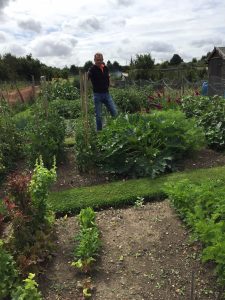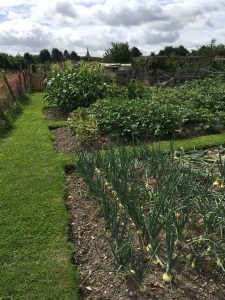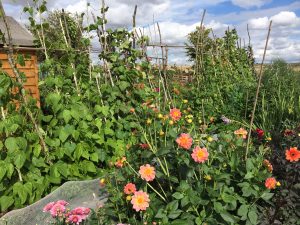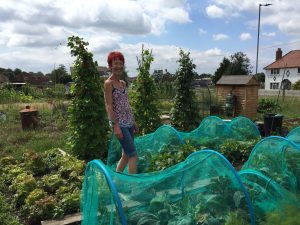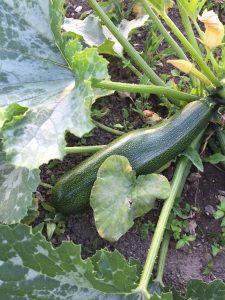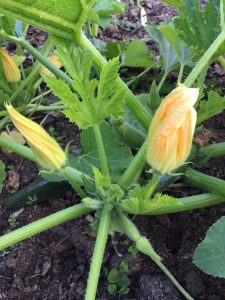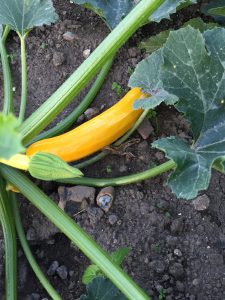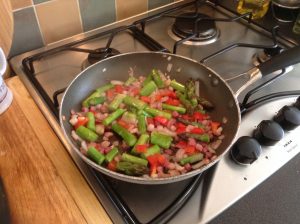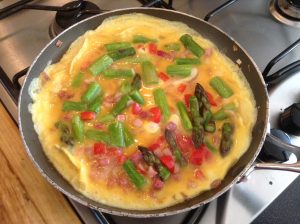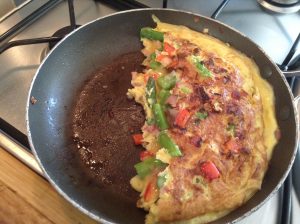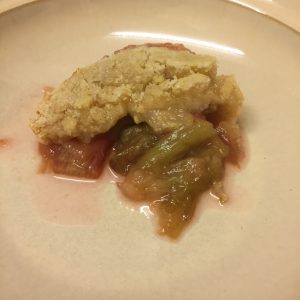(click on any of the images to enlarge them)
Members of our North Road site will be well aware of the work that has gone on recently to replace the dilapidated gate and fence that formed the boundary of the site with the parking area. The nature of the access road, sloping down towards the allotments, also meant that the first plot next to the parking area was susceptible to flooding, making part of it unworkable.
The main contractors for the work were M&J Oakley Ltd who were used previously to install the new boundary fence at the Clothall Road site and the bulk of the work was carried out over about a week at the beginning of September. Half of the cost of the work was funded by grants from local authorities and councillors as well as BALGA fundraising. The remainder has been paid from the plot rental income we have received after 18 months of self management.
The steel gate, which is approx. 2m high, allows separate vehicle and pedestrian access, while the fence, which is 2m high, also includes rabbit proofing along its base.
Once the fencing and gate were finished, a kerb was installed which increased the width of the parking area by a metre. This will also help prevent the flooding to plot no.2 adjacent to the parking area. Drains against the kerb edge were added and these lead to a newly excavated soakaway.
It was decided and agreed unanimously by the General Committee that rather than leave the corner of ground near the gate as it was, it would be better to continue the kerbing into this corner and then to extend the tarmac along the kerb and up to the gate, and to get this additional work done at the same time. This extra area of tarmac has meant we have been able to add an additional two parking spaces to the parking area as well.
A speed hump was also installed a short way up the access road to slow traffic as it approaches the corner by the parking area. The speed hump and tarmac work were carried out by FT Gearing Landscape Services Ltd.
The now thin strip of ground along the front of the parking area will be grassed and planted up with bulbs by a working party. A couple of paving slabs will also be added so people can actually get to the notice board at the site! And the extra bonus of having a high boundary fence is we can now display banners for open days or plot availability, something which wasn’t possible before.
I think you will all agree the entrance to the site looks so much better now and is a example of how self management enables us to improve our sites by reinvesting money raised through plot rents, rather than see it absorbed into Council funds.
Joanna
